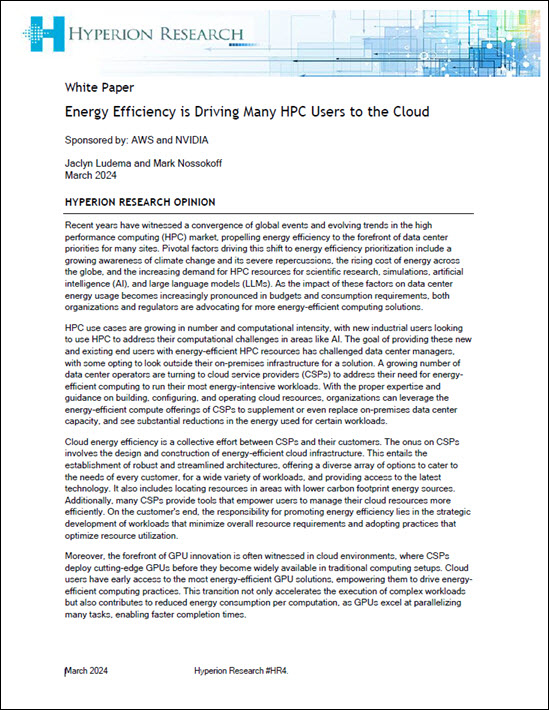San Jose, November 12, 2020 — Super Micro Computer, Inc. (Nasdaq: SMCI), a maker of enterprise computing, storage, networking solutions and green computing technology, today announced that it has deployed an additional cluster at Lawrence Livermore National Laboratory (LLNL) to augment existing computing capabilities available for national security and to help discover therapeutics for SARS-CoV-2, […]
Nearly 1000 AMD GPUs Added to NNSA’s ‘Corona’ Cluster for COVID-19 Research
AMD and Supermicro have upgraded the “Corona” cluster at Lawrence Livermore National Laboratory for COVID-19 drug discovery and vaccine research. The addition of nearly 1,000 AMD Radeon Instinct MI50 GPU accelerators to the National Nuclear Security Administration’s Corona system (named for the solar eclipse of 2017) increases the throughput of the cluster from about 4.5 […]
NNSA Purchasing $105M HPE Cray EX Supercomputer, to be Sited at Los Alamos
Los Alamos National Laboratory has announced a contract for a new HPE supercomputer to be installed in spring of 2022 with quadrupled performance over the existing system for the U.S. Department of Energy’s National Nuclear Security Administration (NNSA). The $105 million HPE Cray EX supercomputer, called Crossroads, will replace Cray’s Trinity system and will be […]
Sandia Selects SoftIron File and Object Storage for Stria Cluster
Sandia National Laboratories Vanguard program has selected SoftIron, Ltd., to provide supplemental file and object storage for Sandia’s ARM-based Stria high performance computing cluster.
Stria supports the petascale Astra supercomputer – which Sandia said is the fastest ARM-based system on the TOP500 listing of the world’s most powerful computers – as a development system for preparing software releases and codes to be used on Astra.
Penguin Computing to Deploy Magma Supercomputer with Intel Xeon Platinum 9200 Processors at LLNL
At SC19, Penguin Computing announced a powerful new supercomputer coming to Lawrence Livermore National Laboratory. Called Magma, the system was procured through the Commodity Technology Systems (CTS-1) contract with the National Nuclear Security Administration (NNSA) and is one of the first deployments of Intel Xeon Platinum 9200 series processors with support from CoolIT Systems complete direct liquid cooling and the Intel Omni-Path interconnect.
NNSA Explorations: ARM for Supercomputing
Howard Pritchard from LANL and Simon Hammond from Sandia gave this talk at the Argonne Training Program on Extreme-Scale Computing 2019. “Sandia National Laboratories has been an active partner in leveraging our Arm-based platform since its early design, and featuring it in the deployment of the world’s largest Arm-based supercomputer, is a strategic investment for the DOE and the industry as a whole as we race toward achieving exascale computing.”
Cray to Build El Capitan Exascale Supercomputer at LLNL
Today the Department of Energy announced that Cray will build the NNSA’s first exascale supercomputer, “El Capitan.” To be hosted at LLNL, El Capitan will have a peak performance of more than 1.5 exaflops and an anticipated delivery in late 2022. El Capitan will be DOE’s third exascale-class supercomputer, following Argonne National Laboratory’s “Aurora” and Oak Ridge National Laboratory’s “Frontier” system. All three DOE exascale supercomputers will be built by Cray utilizing their Shasta architecture, Slingshot interconnect and new software platform.
LANL Solicits Bids for 18 MW Crossroads Supercomputer for Delivery in 2021
The next big supercomputer is out for bid. An RFP was released today for Crossroads, an 18 Megawatt system that will support the nation’s Stockpile Stewardship Program. “Los Alamos National Laboratory is proud to serve as the home of Crossroads. This high-performance computer will continue the Laboratory’s tradition of deploying unique capabilities to achieve our mission of national security science,” said Thom Mason from LANL.”
LLNL Unveils NNSA’s Sierra, World’s Third Fastest Supercomputer
Today LLNL unveiled Sierra, one of the world’s fastest supercomputers, at a dedication ceremony to celebrate the system’s completion. “The next frontier of supercomputing lies in artificial intelligence,” said John Kelly, senior vice president, Cognitive Solutions and IBM Research. “IBM’s decades-long partnership with LLNL has allowed us to build Sierra from the ground up with the unique design and architecture needed for applying AI to massive data sets. The tremendous insights researchers are seeing will only accelerate high performance computing for research and business.”
The Strategic Foundation of Exascale Computing in the USA
Exascale computing continues to work its way into the consciousness of wider and more diverse audiences, creating demand for more explanation of what it is and what the U.S. initiatives are that have forged the strategic foundation for making exascale in the U.S. a reality. “Two terms that often land in the middle of these conversations begging for some clarification are the Exascale Computing Initiative (ECI) and the Exascale Computing Project (ECP).”











